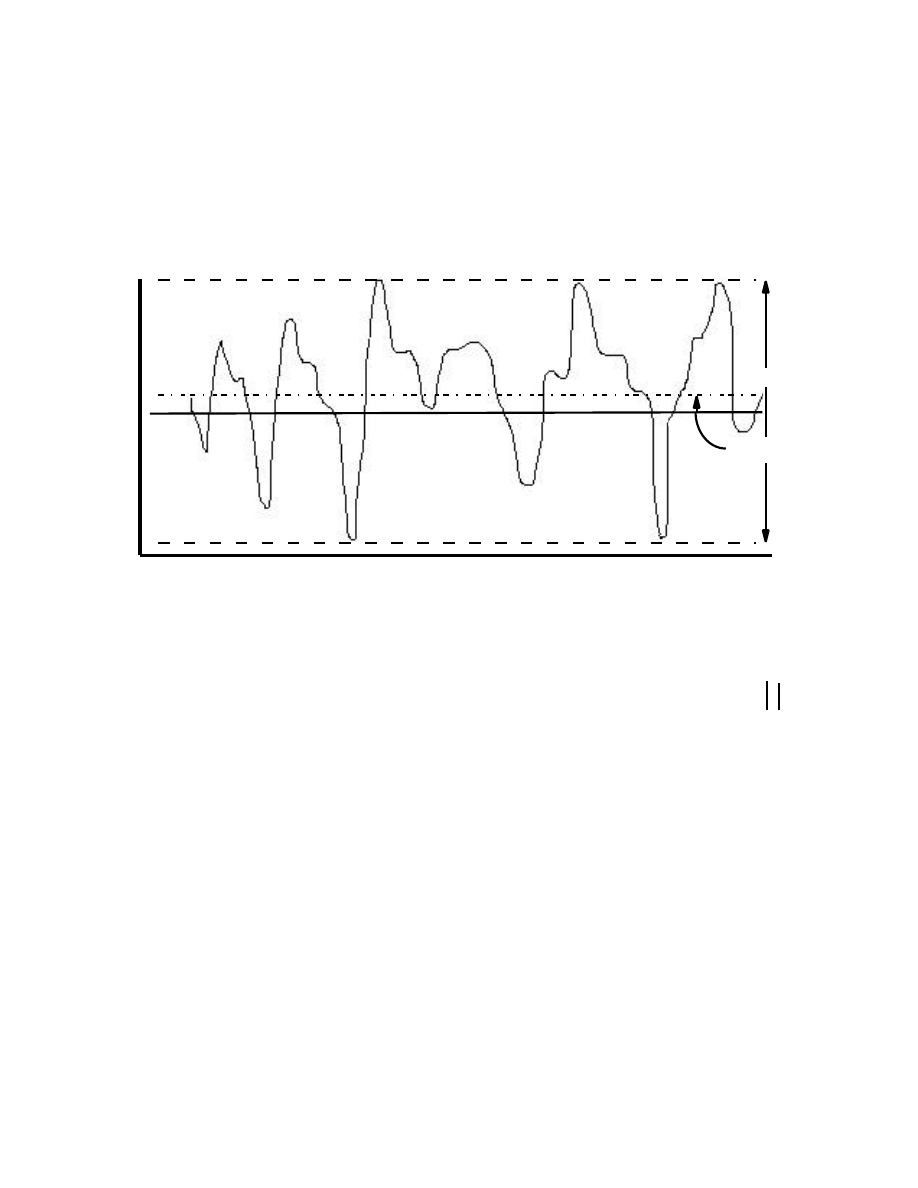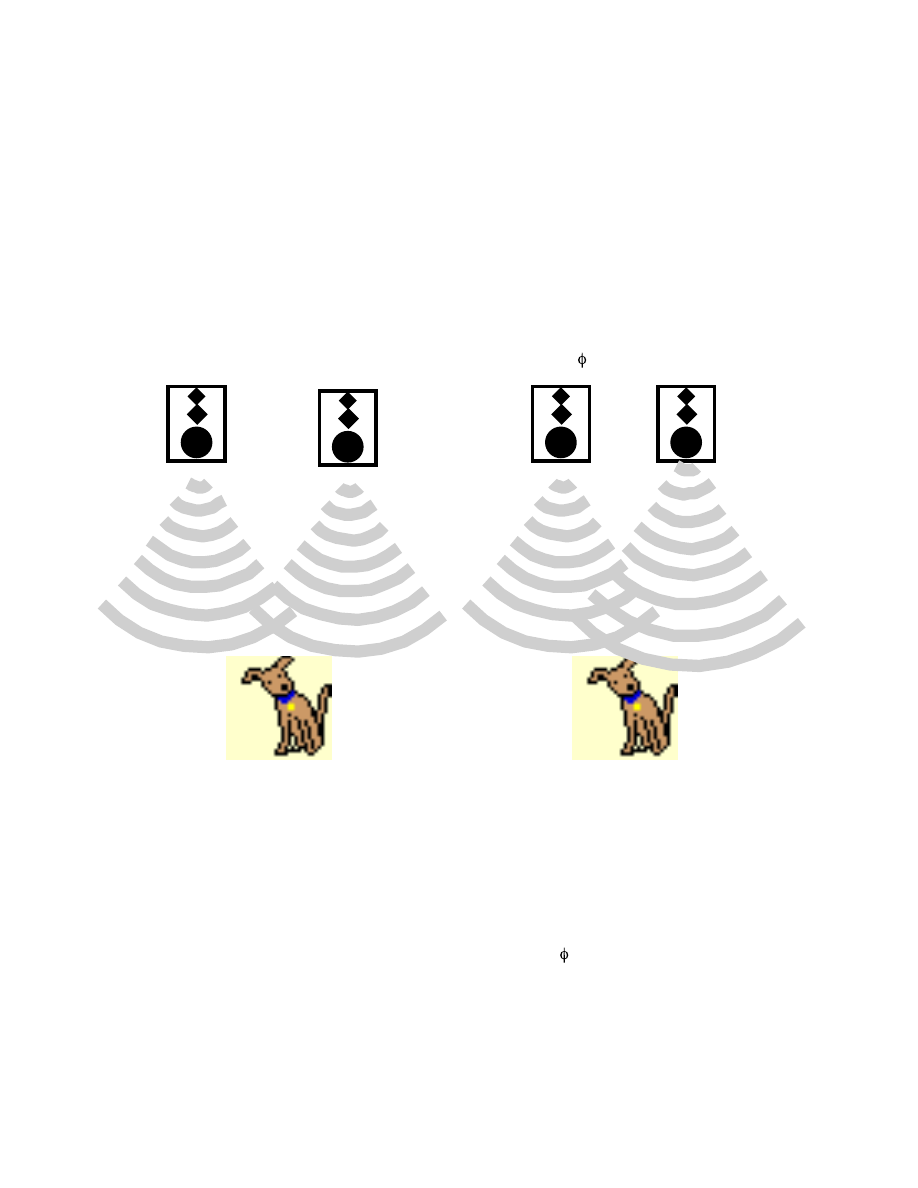ВУЗ: Казахская Национальная Академия Искусств им. Т. Жургенова
Категория: Учебное пособие
Дисциплина: Не указана
Добавлен: 03.02.2019
Просмотров: 12353
Скачиваний: 6

P
patch mapping: A Program Change message is limited to only 128 values, while some synthe-
sizers can store many thousands of separate patches. This would mean that only 128 of the
programs could be accessed via MIDI. Patch mapping is a process whereby a given program
change number received by a MIDI device can be linked to any one of the available patches, as
determined by a patch map. To get beyond the 128 limit, the MIDI Continuous Controller mes-
sage, Bank Select, has been defined for selecting different banks of sounds prior to sending a
program change number.
patch point: A location in an electronic circuit at which access to the circuit is provided by a
jack in the patch bay or console channel strip. See normalled connection, output.
path length: The distance between a sound source and the listener or microphone. See near-
field, far-field.
pattern looping: A digital composition technique whereby long, looped samples are mapped
into a sampler along with other samples such as bass riffs, drum variations, and solo samples
(vocal sounds, effects, etc.) The different loops and solo sounds are brought in and out via a
keyboard to create a finished composition.
PA version: Public Appearance version. A prerecorded tape or just the instrumental backing
of a song, with which a solo vocal artist can sing during public appearances to promote a re-
cord.
PCI: Peripheral Component Interface. An internal bus architecture for PCs and the Mac
commonly used for digital audio cards.
PCM: Pulse Code Modulation. A technical term for sampling. Any digital method of encod-
ing and decoding the amplitude of an audio signal. For example, an 8-bit PCM yields ampli-
tude values of 0-255, and produces attendant sampling errors and quantization errors. PCM
cards are always ROM, and contain only sampled waveforms, contained in a wavetable. See
PWM, split-band. See also PAM.
PCM-F1: A reference to the (discontinued) Sony digital recording system which used an EIAJ-
format, 16-bit PCM processor to convert audio into a digital form that can be stored on con-
sumer videotape. The first attempt at digital audio.
PD: See ProDigital.
PDL: Projectionist Dummy Loader. Union designation for the person in a film recording fa-
cility who functions both as projectionist and as a machine room operator.
peak: Peak value is the maximum instantaneous excursion from zero of an audio waveform,
as measured by a peak meter (PPM). The peak value of a sound is also the maximum instan-
taneous pressure excursion of the sound. See crest factor, VU meter.
peak expansion: The adjustment of an expander’s threshold so that most program material
passes through unaffected, but peaks or transients are heavily expanded. Used to restore peaks
to program material that has been overly compressed.
peak hold: A function of some volume indicators that indicates the peak level of the signal and
holds that level until it is either exceeded by a higher peak or the indicator is reset by a time
delay or manual reset.

P
peaking equalizer: Another name for a parametric equalizer.
peak level: See peak.
peak-to-peak value: A measure of the highest positive-to-negative voltage swing in any speci-
fied segment of the program signal. Twice the absolute value of the greater voltage reached by
an adjacent positive or negative transient peak. See PPM.
Amplitude
Peak Value
Peak-to-Peak Value
Time
RMS Value
peanut microphone: See Lavalier microphone.
PEC/direct: Photo-Electric Cell. In film re-recording, the act of switching between playback
from the recorder either in playback mode or
pedal: (1) A foot-operated lever on a musical instrument. On a piano, the indication
,
means to use the sustain pedal. (2) Strictly, pedal point. A sustained or continually repeated
note that occurs throughout a passage of changing harmonies. Commonly on the dominant
note, it creates a feeling of tension; on the tonic, it creates a sense of repose. It often occurs in
the bass; if played above the other parts, it is known as an inverted pedal. Also known as a
drone in folk music.
pedalboard: A large and widely spaced keyboard designed to be played by the feet, com-
monly found on organs, although also available as a type of MIDI controller. Generally used
to play bass notes.
perfs: Perforations. Sprocket holes in motion picture film.
pentatonic: A scale in which the octave is divided into five notes.
percentage quantization: A method of quantization in which notes recorded into a sequencer
with uneven rhythms are not shifted all the way to their theoretically perfect timings, but in-
stead are humanized, with the amount of shift being dependent on the user-selected percentage,
called quantization strength.

P
perceptual coding: Any audio compression scheme that deletes audio frequencies that are
masked by other, more dominant frequencies, and thus are not perceived by the listener. See
split-band coding, transform coding, temporal masking, MPEG, PASC, ATRAC, and AC3.
percussion waveform: A percussion waveform is generated through the random noise gen-
erator of a synthesizer. If a second-order (two-pole) filter that has a high Q (low loss) is used
after the noise generator, it simulates a drum. If repeated at a predetermined rate, it is called a
repeat-percussion waveform, which constitutes the basic rhythm section of a synthesizer.
period: In a waveform that repeats a particular pattern over and over, the time required for
one repetition of one wavelength is called the period. The waveform is then called periodic,
and can be expressed as the summation of a series of sine waves called harmonics. The length of
the period of the waveform varies inversely with frequency.
perspective: The effect of front-to-back depth in an audio signal. This may be inherent in the
stereo image or may be artificially achieved by varying the amount of direct sound and reflected
sound. The indirect signal may be obtained from mics places away from the source, or may be
generated by a reverberation unit.
PFL: See pre-fade listen.
PFX: Production sound effects. Tracks of sound effects, as opposed to Foley, music, or dialog,
which get mixed into the final DME tracks of a film soundtrack. Sometimes Foley gets mixed
into the dialog stem, and PFX into the effects stems to separate the effects which accompany
the dialog from BG/walla effects.
phantom image: A monophonic sound panned equally to both speakers.
phantom power: DC power (usually 9V to 52V) supplied to condenser microphones by a pre-
amplifier close to the microphone, necessary due to the extremely high impedance of the micro-
phone, via the signal wiring of the microphone.
phase: Phase is defined as the time relationship between two corresponding points on a con-
tinuous wave, or the angular, or time, displacement between the voltage and current in an AC
circuit. A sine wave signal is the simplest possible waveform and goes through 360˚ in one cycle,
whereby it returns to its starting point. Another way of saying the same thing is that the signal
has gone through 360˚ of phase angle, or phase change. The phase is actually a measure of
time, 360˚ equaling one period of the signal. The time represented by a phase change of a cer-
tain number of degrees is thus dependent on frequency.
Phase-Alternating Line: See PAL.
phase cancellation: An attenuation of signal components resulting from combining out-of-
phase waveforms. When two waveforms are mixed, their harmonics are added. If these signals
are out-of-phase with each other, the amplitudes of the harmonic components differ at various
times, as determined by the phase relationship. If the added harmonics have the same polar-
ity, the signal is reinforced at those frequencies, and vice-versa. See phase distortion.
phase coherent: A condition encountered in the summation of two or more in-phase signals,
in which the signals combine constructively, with little or no phase cancellation.

P
phase compensation: In some tape recorders, there is a special equalizer whose purpose is to
minimize phase distortion.
phase difference: The measure of time delay with which two identical signals reach a com-
mon electrical or acoustic point. In the case of a sine wave, for a pure tone of FHz, 360˚ of phase
difference, D, represents one full cycle. If F = 1kHz, D = 360˚ takes exactly 0.001 sec. For any F,
the number of degrees phase difference, D, between two sources whose identical outputs ar-
rive at a common point with a time difference of T seconds is:
D
=
F
×
T
×
360
phase distortion: An effect caused when phase-shift in an audio device is not a linear function
of frequency. In other words, different frequencies experience different time delays. This
changes the waveform of the signal and is especially injurious to transients. Most transducers
produce significant phase distortion. As low frequencies travel slightly faster than high fre-
quencies and as air absorbs high frequencies more readily than low ones, the more delay there
is between low frequencies and the higher harmonics of a sound, the sound becomes progres-
sively more smeared and is perceived as more distant.
phase distortion synthesis: A form of modulation synthesis in which the spectrum of a DCO’s
output signal is altered by modulating the DCO’s clock frequency within each cycle, while the
over-all frequency is kept constant. The oscillator’s clock frequency speeds up and slows
down, producing rapid phase changes as the waveshape is alternately compressed and ex-
panded (distorted) to fit within the regulated period. Popularized by the Casio CZ-series
synthesizers.
phase inversion: See phase reversal.
phase invert: See
.
phase linear: The ability of an audio device to pass a signal without causing phase-shift.
phase-lock: See sync-lock.
phase-locked loop (PLL): A closed-loop electronic circuit that automatically adjusts and locks
the frequency of an oscillator to the correct frequency for receiving a signal. The PLL is the
preferred FM detector circuit in commercial systems today as it requires no tuned circuits,
hence does not require alignment. It normally has high amplification which produces a strong
output audio signal. Since it does not respond to amplitude variations, it also provides limit-
ing action.
phase manipulation: A technique used by aural enhancers which realigns the relative phase of
existing harmonics.
phase meter: An electronic circuit and display that compares two incoming signals and shows
the phase difference between them.
phase modulation: See phase-shift.

P
phase reinforcement: The opposite of phase cancellation. An reinforcement of signal compo-
nents resulting from combining phase coherent waveforms. When two waveforms are mixed,
their harmonics are added. If these signals are not perfectly in-phase with each other, the am-
plitudes of the harmonic components differ at various times, as determined by the phase rela-
tionship. If the added harmonics have the same polarity, the signal is reinforced at those fre-
quencies.
phase reversal: (1) The condition where the connection in one channel of a stereo signal are
reversed. This is most likely to happen at the loudspeaker, and results in phase cancellation,
particularly apparent in the bass. (2) In electronic signals, changing the polarity of the signal
from positive to negative or vice versa, thereby causing a reversal in polarity of the signal.
When viewed on an oscilloscope, the waveform flips with respect to the time axis. Also called
polarity reversal or phase inversion. See common mode, out-of-phase, .
The pair of loudspeakers on the left are in phase--the speaker cones cause compression and
rarefaction the surrounding air in unison. Those on the right are out-of-phase, causing the air
compression generated by one speaker to be cancelled by the rarefaction generated by the
other.
phase reversal switch: A switch, usually found in a balanced line, that allows the user to inter-
change the two conductors, causing a 180˚ shift in phase of the signal. This is often a feature of
recording consoles to allow the engineer to optimize the phase relationships of multiple mi-
crophones placed in close proximity to each other, i.e., mics likely to pick up substantially
identical signals, such as on a drum kit. See phase cancellation, .